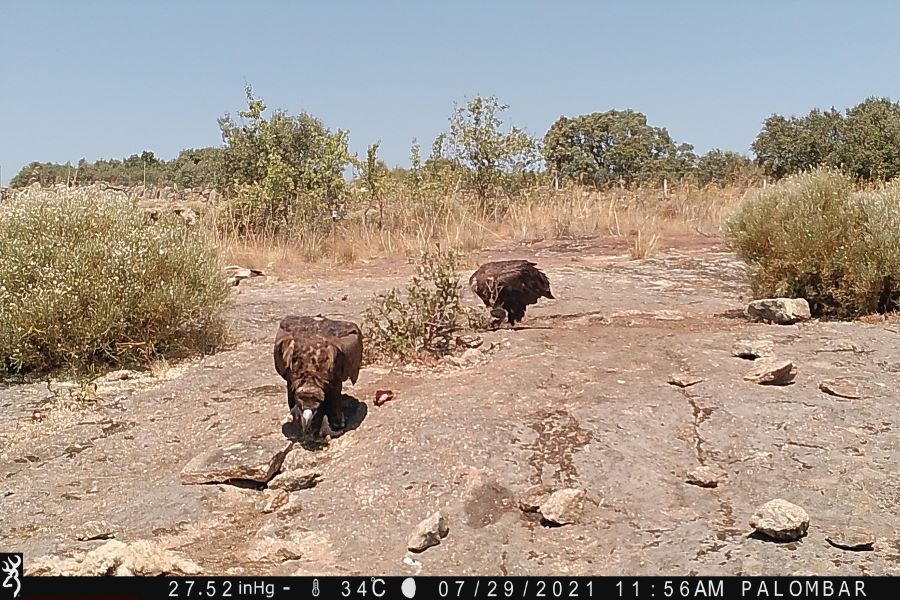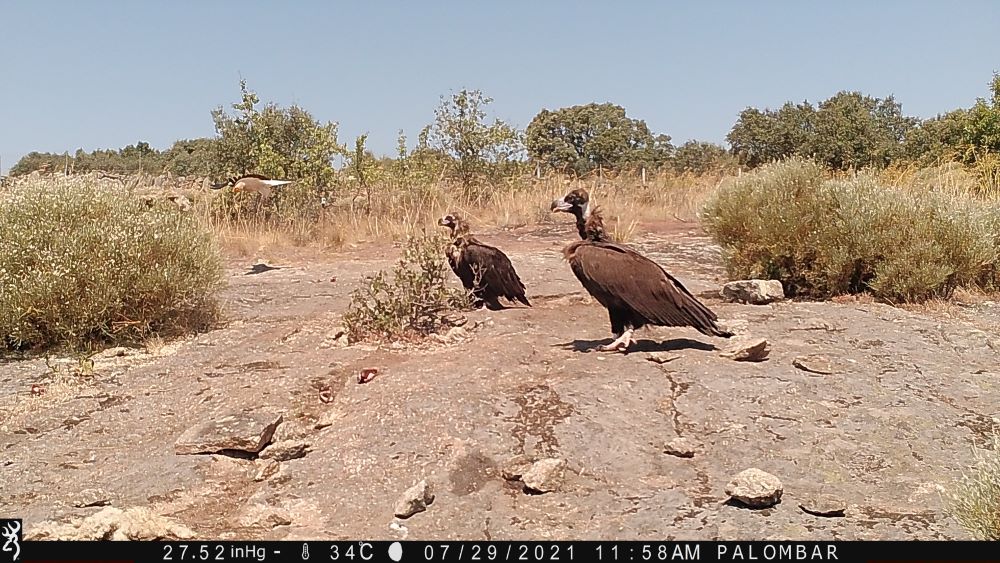
In 2020, two Cinereous Vulture (Aegypius monachus) chicks hatched in the Douro International Natural Park (DINP) after the species naturally recolonised the area. Now, monitoring efforts confirmed that one of these two young Cinereous Vultures returned home this year for the first time!
Tagging Cinereous Vulture nestlings in the Douro
The Douro Canyon was home to two Cinereous Vulture breeding pairs back in 2020, and both of them successfully bred during that breeding season! Following this great news, a team within the LIFE Rupis project equipped both nestlings with GPS transmitters in the nest before they took their first flights. Although tagging Cinereous Vultures in the nest is not an easy task, it’s definitely worth it since it allows constant monitoring of their movements, which provides valuable information to ensure their protection and conservation. This action has been a joint effort by Associação Transumância e Natureza (ATN), the Instituto da Conservação da Natureza e das Florestas (ICNF), the MAVA Foundation and us at the Vulture Conservation Foundation (VCF).
Following the movements of Lechuga
The juvenile Cinereous Vulture that returned home was baptised Lechuga. The vulture left its hatching area in the PNDI in February 2021, and has been exploring new territories between Spain and Portugal, namely the province of Salamanca, the Sierra de Gredos, Extremadura and Alentejo ever since.

In recent months, it had been feeding frequently in a rubbish dump located near the city of Salamanca in Spain, a common behaviour among vultures. In these places, scavenging birds find plenty of available and abundant food, but of poor quality, as it may well be contaminated, with a greater risk of intoxication.
After a dispersive tour, the juvenile Lechuga returned to the territory where it hatched in the PNDI for the first time on 29 July this year. Lechuga likely tagged alongside other vultures that visited the Palombar-managed feeding station for scavenging birds. A camera trap at the station photographed Lechuga feeding together with five other Cinereous Vultures who are probably sub-adults. Such feeding stations can support the recovery of vultures since they provide plenty of safe quality food, and can therefore prove essential for threatened birds, especially during the breeding season and the dispersal period of juveniles.

Cinereous Vultures in Portugal
The Cinereous Vulture became extinct as breeding species in Portugal in the 1970s, mostly due to the use of poisoned carcasses targeting unwanted predators. An increasing population in Spain saw the species regularly visiting Portugal to forage, with the first pair breeding in central Portugal (Tejo Internacional) in 2010 (where now there is a small colony of more than fifteen pairs), and then in north-eastern Portugal (one single pair). And in 2015 the species recolonised Herdade da Contenda in south-eastern Portugal, and has bred there successfully ever since – there are currently ten breeding pairs there now.





